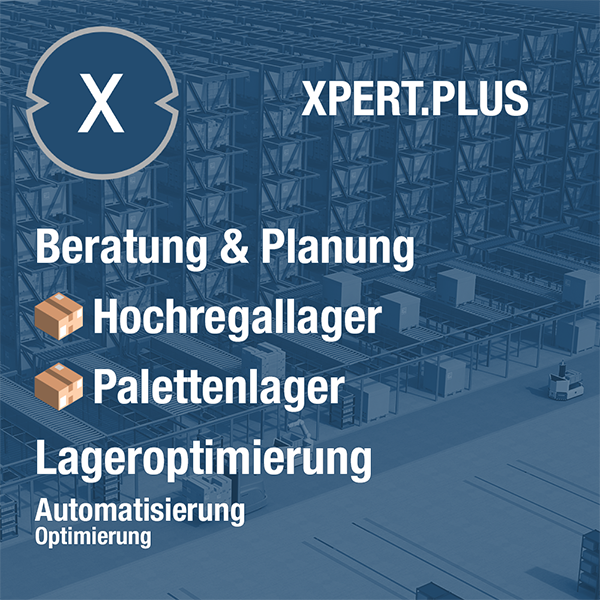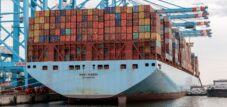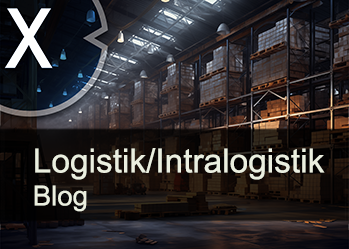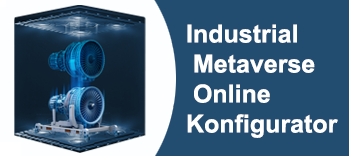Alternatives to Boxbay container storage: a comprehensive analysis of container high-beam bearings and other options
Xpert pre-release
Language selection 📢
Published on: July 20, 2025 / update from: July 20, 2025 – Author: Konrad Wolfenstein

Alternatives to Boxbay container storage: a comprehensive analysis of container high-bay bearings and other options – Image: Xpert.digital
More than just stacked: New systems transform the container storage – how modern technology changes container logistics
Why are traditional methods of container storage today under unprecedented pressure?
The global supply chains and with them the seaports, their central nodes, are in a profound change. The traditional methods of container storage, which formed the standard for decades, are increasingly reaching their physical and operational limits. This pressure does not arise from a single cause, but from the meeting of several, mutually reinforcing factors that force a fundamental re -evaluation of warehouse technology.
The most obvious driver is the constant growth of world trade and the associated container traffic. But the quantitative increase alone does not explain the urgency of the situation. A much more critical factor is the dramatic increase in ship sizes. The introduction of Ultra Large Container Ships (ULCS) has fundamentally changed the dynamics of the container handling. While around 8,000 TEU (Twenty-Foot Equivalent Unit) transported around the turn of the millennium, it is today ships with a capacity of up to 24,000 TEU. These giants of the oceans deliver an immense number of containers at once. Modern ulcers can transport over 500 containers per shipbucht, compared to 220 in the past. This leads to extreme demands of demand, which bring the country -sided infrastructure of a port to its load limit in the shortest possible time.
These demand tips encounter an infrastructure that has often not grown to the same extent. Many large ports have grown historically and are in densely populated urban areas, which makes the physical expansion of the areas extremely difficult and expensive. Land acquisition, often the only option for expansion, is not only expensive – with costs of 2,000 to 3,000 euros per square meter and more – but also ecologically questionable and encounters increasing regulatory resistance.
This shortage of space forces the terminal operators to get up and stack containers more and more densely. In conventional container camps (yards), which are operated by cranes such as rubber tires (RTG) or rail -bound (RMG) portal cranes, containers are stacked directly on top of each other, often five to six layers. This is where the fundamental conflict of target of traditional warehouse logic is revealed: In order to increase the area efficiency (stacked), operational efficiency is sacrificed. As soon as the capacity of such a warehouse block exceeds a critical point of around 70-80 %, the performance breaks down dramatically. The reason for this is the so -called “unproductive handling movements” or “reshuffling”. In order to get to a container that is located on the bottom of a stack, all containers above it must first be implemented. These unproductive movements can make an amazing share of 30 % to 60 % of all crane movements.
The arrival of the ULCs has made this inherent conflict from an operational annoyance an existential threat to the competitiveness of large ports. The scale effects, which are to be achieved by larger ships at sea, are on land through massive inefficiencies. This leads to longer ship lying times, overloaded terminals and increasing costs in the entire supply chain. In addition, there are stricter environmental requirements, noise protection regulations and an increasing lack of qualified workers, such as crane drivers.
New technological approaches create new technological approaches in this area of tension made of growing volume, increasing complexity, shortage of surface and efficiency pressure. They not only aim to improve storage, but also to dissolve the fundamental conflict of goals between the use of land and operational access. Systems such as Boxbay are a direct answer to these challenges and redefine the paradigms of container storage.
Suitable for:
- The top ten of the container high-class bearing manufacturers and guidelines: technology, manufacturer and future of port logistics
1. What exactly is the Boxbay high-distance system and how does it work technologically?
The Boxbay system represents a paradigm shift in container storage by transferring the proven principles of industrial high-bay storage to the specific requirements of seaports. It is the result of a joint venture between DP World, one of the world's largest port operators, and the German SMS Group, a specialist in industrial plant construction.
The technological origin of the system is a decisive factor for its design and market acceptance. The nuclear technology was not reinvented for port logistics, but was adapted by the SMS subsidiary Amova. Amova has been a leading provider of fully automatic high-bay bearings for storing extremely heavy loads in the metal industry for decades, such as steel or aluminum coils in shelves of up to 50 meters high. These decades of experience in 24/7 operation under rough industrial conditions with even higher loads than with containers gives boxing bay technology inherent robustness and reliability. The transmission of this tried and tested technology significantly lowers the perceived risk for port operators, which are traditionally very conservative when introducing new, unpredictable systems. It is less a technological jump into the unknown than an intelligent application of a proven solution to a new problem area.
The basic principle of Boxbay is simple, but revolutionary: instead of stacking on each other directly, each individual container is placed in an individual subject of a massive steel shelf. These shelf systems can reach a height of up to eleven container levels. The heart of the system is fully automatic, rail -guided stacking cranes (stacker cranes), which move through the corridors between the shelves at high speed. Using a spreader-gripping arm, these cranes can control and remove any container of any container directly and without the movement of another container. This direct access is the key to the dissolution of the objective conflict between storage density and efficiency described above.
2. What specific advantages in terms of speed, intelligence and sustainability (fast, intelligent, green), Boxbay claims for itself?
Boxbay summarizes its promotional promises under the keywords “Fast, Smart, Green”, which describe the core advantages of the system.
Fast
The speed advantage primarily results from the complete elimination of unproductive handling movements. Since each container is directly accessible, the 30-60 % of the crane movements, which are spent in conventional systems for “reshuffling”. This leads to a constant and, above all, predictable performance, which is independent of the filler of the warehouse – a decisive difference to conventional yards, the performance of which breaks down when the utilization is high. This predictability and reliability make it possible to optimize downstream processes. In this way, truck handling times (Truck Turnaround Time) are sought from well under 30 minutes. In addition, an increase in the productivity of the Kaikaine (Ship-to-Shore Cranes) is expected by up to 20 %, since so-called “dual cycle” movements (simultaneously unloading and loading the ship) can be reliably planned and without waiting times can be carried out on the right container from the yard.
Intelligent
Boxbay is designed as a fully automated overall system that ranges from level 0 (field devices) to level 3 (process control) and is delivered from a single source. This reduces interface problems and increases system reliability. The system includes its own warehouse management system (Warehouse Management System, HBS TOS), which can communicate seamlessly with any overarching Terminal Operating System (TOS) of the port. Another intelligent feature is the modular and scalable architecture. A terminal can start with a smaller number of gears and gradually expand the system while the rest of the port remains in operation. Each new module increases the capacity and throughput without disturbing ongoing operation.
Sustainable
The ecological advantages are diverse. The most important aspect is the immense area efficiency. Boxbay triples the storage capacity on the same floor space or only requires a third of the area for the same number of containers compared to a conventional RTG yard. This reduces the need for expensive and environmentally harmful land acquisition. The system is fully electric and has energy recovery systems (recuperation) that generate energy when braking or lowering containers and feeding back into the system. In combination with a photovoltaic system on the large roof area, Boxbay CO2-neutral or even CO2 positive can be operated by generating more energy than it consumes. Since the fully automatic operation does not require light and the structure can be encapsulated, noise and light emissions are drastically reduced, which significantly improves acceptance near residential areas.
3. What configurations does boxbay offer and for which application cases are they designed?
In order to enable flexible integration into different terminal layouts and existing transport logists, Boxbay was developed as a modular system with two basic configurations: Side-Grid® and TOP-GRID®, which are supplemented by a hybrid variant. Both use the same technological building blocks, but differ mainly in the design of the water -side interface.
Side-Grid®
This configuration was realized in the pilot project in Dubai. It is designed for water-side operation with conventional or automated portal hub wagons (Straddle carriers) or shuttle carriers. These vehicles transport the containers to the front of the warehouses and hand them over to special transferres that serve as a buffer and decouple the movements of the external vehicles from the internal stacking cranes.
Top-Grid®
This variant is designed for an even deeper integration of automation. It is optimized for operation with driverless transport systems (automated guided vehicles, AGVs) or automated trucks. These vehicles drive directly under the aisles of the high -bay warehouse. The stacking cranes can then record the containers directly from above. This enables a particularly quick and seamless transfer between warehouse and horizontal transport.
Hybrid grid
This variant combines elements from both systems to create tailor -made solutions for specific terminal requirements.
The country -sided interface for the handling of external trucks is similar in both main variants. The trucks drive through a one-way loop that is spanned by separate, automated transfer cranes. These take up the containers from the truck and hand them over to an internal conveying system that transports them to the stacking cranes or vice versa. This concept ensures a secure separation of external truck traffic from internal automated operation.
4. What practical experience and performance data are there from the pilot project in Jebel Ali and the first commercial order in Pusan?
The validation of a disruptive concept through real operating data is of crucial importance. Boxbay has two important references.
Pilot project in Jebel Ali, Dubai
The “Proof-of-Concept” system was installed in Terminal 4 of the port of Jebel Ali and put into operation in January 2021. The system, which includes 792 container parking spaces (approx. 1,300 TEU), served to test and optimize the technology under real port conditions. Over 330,000 container movements were carried out by the end of 2024. The results of the test phase exceeded the original expectations. The measured performance data was higher than simulated: the envelope power reached 19.3 movements per hour at the water side interface and 31.8 movements per hour on the land-on truck cranes. At the same time, the system proved to be more energy -efficient than forecast, with energy costs, which was 29 % below expectations, at the same time significantly reduced maintenance costs. In September 2022, the system was officially declared “Marktreif”.
Commercial order in Pusan, South Korea
The first commercial order was signed in March 2023 with the Pusan Newport Corporation (PNC) in South Korea. This project is of particular strategic importance because it is a Brownfield project – the retrofitting of the system in an existing, already state-of-the-art and operational terminal. The Boxbay system is seamlessly integrated into the existing processes with automated, rail-bound portal cranes (ARMGS) and truck. The declared goal is to eliminate 350,000 unproductive transshipment movements annually and to improve the truck detachment time by 20 %. The success of this project will be a crucial indicator of the ability of HBS technology to play a key role not only in new construction projects, but also in the modernization of existing port infrastructures.
5. How do conventional container bearings work based on rubber tires (RTG) and rail -bound (RMG) portal cranes?
In order to be able to classify the innovation height of high -bay bearing systems (HBS) such as Boxbay, an understanding of the established status quo is essential. The work horses of modern container terminal logistics have been rubber tires (Rubber Tyred Gantry, RTG) and rail-bound (Rail Mounted Gantry, RMG) for decades.
Rubber Tyred Gantry Cranes (RTGS)
RTGs are large portal cranes that drive on rubber tires. Their greatest strength is their flexibility and mobility. You can move freely within the container camp (YARD) and, if necessary, switch from one warehouse block to the next by turning your wheels around 90 degrees. This makes them particularly versatile and adaptable to changing operational requirements. The infrastructure costs for RTG yards are comparatively low, since no elaborate rail foundations are required; A fortified, flat surface is sufficient. RTGs are traditionally driven by diesel engines, which gives them autonomy from an external power supply, but also leads to considerable local CO2 emissions, noise and higher maintenance costs. Modern variants are also available as hybrid or fully electric e-RTGs.
Rail Mounted Gantry Cranes (RMGS)
RMGs move on firmly installed rails that run along the warehouse blocks. This rail binding limits its flexibility compared to RTGs, but gives them higher stability, precision and speed. Since their movements take place on predefined paths, RMGs are much easier to automate than RTGs. As a rule, they are operated electrically, which makes them more environmentally friendly and cheaper in the company (no fuel costs, less maintenance). However, your installation requires high initial investments (Capex) in the rail infrastructure and careful, long-term planning of the terminal layout.
6. What are the inherent operational restrictions on these systems?
Despite their wide distribution and continuous development, both RTG and RMG-based systems suffer from a fundamental, system-in-case restriction: the principle of block stacking. The containers are stacked directly into blocks on top of each other, which leads to a cascade of operational inefficiencies.
Unproductive cover movements (“reshuffling”)
This is the greatest weakness. In order to get to a certain container that is not in the top position of a stack, all containers above it must first be raised and temporarily stored in another place. Only then can the target container be removed, and then the intermediate containers often have to be moved back. These unproductive, time -consuming and energy -intensive movements can make up between 30 % and 60 % of all crane movements in a yard.
Low land use efficiency
The need for reshuffling means that a warehouse block can never be filled 100 %, since always free space is required for the intermediate storage of containers. In practice, effective utilization is limited to around 70-80 %. If this threshold is exceeded, the number of the necessary cover movements increases exponentially and the performance of the terminal breaks. Productivity becomes unpredictable and difficult to plan.
Environmental and security aspects
Diesel-powered RTGs in particular are a source of significant local CO2, fine dust and noise emissions. Manual operation in a busy yard also harbors higher security risks for the staff on the ground.
7. How do automated stacking cranes (ASCS) do in direct comparison to manually operated RTGs and RMGs?
Automated stacking cranes (automated stacking cranes, ASCS) – often also referred to as automated RMGs (ARMGS) – are the next logical step in the evolution of conventional warehouse technology. They take the concept of the RMG and replace the human crane operator with an automated control and positioning system.
Advantages of ASCS
ASCs offer clear advantages over manual systems. They work around the clock with constant, predictable performance and increase security because fewer personnel are in the dangerous work area of the cranes. By precisely, computer -controlled movements, the containers can be stacked denser and higher, which significantly increases the storage density and thus the capacity on a given area. An example from Hamburg shows that the use of ASCs could doubt the storage capacity on the same area. They are also more energy -efficient than manual or diesel -powered cranes.
The fundamental delimitation to HBS
Although ASCS represent a significant improvement, they do not solve the core problem of block stacks. They are a form of process optimization, not the process setting. An ASC system takes the existing, inherently inefficient process of block stacks and performs it faster, more precisely, safer and denser by automating it. However, the basic process – stacking containers one above the other and sorting the necessary – remains.
A high -bay bearing system (HBS) like Boxbay follows a radical other approach. It replaces the process of block stacks entirely with the principle of direct individual access. Each container has its own, firm storage space on a shelf and can be reached at any time without the movement of another container.
This is a strategic fundamental decision for a terminal operator. The investment in ASCS means to perfect the well -known and proven model of the block bearing. This often appears as the less risky, evolutionary path, but retains the systemic restrictions on the reshuffling. The investment in an HBS is a revolutionary step. It potentially harbors higher initial risks and requires complete rethinking in the management, but has the potential to completely overcome the old restrictions and achieve a new level of efficiency.
Alternatives to the Boxbay system – other container high-base camp concepts
8. Are there besides Boxbay other companies that develop or offer high-bay bearing systems (HBS) for ISO containers?
While Boxbay gained a high media presence through its prominent joint venture and the pilot project in Dubai, it is by no means the only player in the burgeoning market for high -bay warehouse systems for containers. The idea of transferring the principles of Automated Storage and Retrieval Systems (ASRS) from industrial and warehouse logistics to containers is not – the first patents were already registered in 1968. Today, several established logistics and crane manufacturers work on their own concepts, some of which differ significantly from Boxbay in their technological philosophy, which indicates that the market is in a phase of technological differentiation. There is no “one” HBS approach. The main differences lie in the type of gripping (from above or from below), the architecture of the crane system (pure stacking crane, hybrid solutions) and the design of the interfaces to the rest of the terminal. This diversity arises because the providers apply their respective core competence from other areas of intralogistics- be – the steel, paper or general warehouse – to the problem of container storage. For port operators, this means that in the future you can probably choose from a number of specialized HBS solutions that are tailored to your specific requirements.
Suitable for:
Konecranes & Pesmel
In partnership with Pesmel, a specialist for ASRS in the paper and metal industry, the Finnish crane manufacturer Konecranes presented a concept called “Automated High-Bay Container Storage” (AHBCS) in April 2022. This system is designed for a stacking height of up to 14 containers and combines an automated stacking crane for storing and outsourcing in the aisle with separate bridge cranes, which take over the handover to the charging zones for trucks or trains. The containers are stored lengthways, which could enable a direct connection to the gates of distribution centers.
LTW intralogistics
This Austrian company has already implemented a functioning HBS for the Swiss army. The technological peculiarity of the LTW system is that the containers are raised from below and deposed on the shelves instead of gripping from above as with Boxbay or Konecranes (top lift). This is done using a stacking crane, which carries special onboard shuttles, so-called “Gangway Vehicles”. This method also enables a double -deep storage, which further increases the storage density.
Amova
The SMS subsidiary, the technology of which forms the basis for Boxbay, also appears as an independent provider of HBS solutions for port logistics. Your portfolio includes the complete system of shelf structure, stacking cranes and warehouse management software, based on your decades of experience in heavy -duty logistics.
Other and historical concepts
In addition to the main actors mentioned, there are further concepts and previous projects. This includes the “Container Hangar”, an early Japanese HBS project by NYK and JFE Engineering, which went into operation in 2011. Other patented systems are “Multisstaka” by Peter Cannon and a concept of the German company Vollert, which is also based on a central stacking crane.
The following table provides a structured overview of the most important providers and their technological approaches:
Market overview – provider of high -bay warehouse systems for containers
The market overview shows various providers of high -bay warehouse systems for containers that have developed different innovative technologies. Boxbay, a joint venture from DP World and SMS Group, presents the High Bay Storage (HBS) concept with a top lift stacking crane that can reach up to 11 levels. The system is based on a technology transfer from heavy-duty steel coillogistics and is characterized by high system integration.
Another solution comes from the partnership between Konecranes and Pesmel. Your automated high-bay container storage (AHBCS) also uses a top lift stacking crane, supplemented by separate bridge cranes for the handover. This concept enables up to 14 levels to be stored and is particularly suitable for connecting to distribution centers.
LTW intralogistics follows a different approach with a high bay storage system that Bottom-Lift uses technology with onboard shuttles. The company has already implemented a project for the Swiss army and enables a double -deep storage.
Amova from the SMS Group appears both as a technology supplier for Boxbay and as an independent provider. Your High-Bay Storage Systems also use a top lift stacking crane and can master warehouse heights of up to 50 meters and 11 levels, based on your expertise in heavy-duty logistics.
9. Radical alternatives – beyond the high -bay warehouse: What unconventional approaches to container logistics are there, such as underground systems?
While high -bay warehouse solves the problem of the shortage of surface in the vertical dimension, there are more radical approaches that want to banish container traffic and the associated problems – traffic jams, noise, emissions – from the surface. The leading concept in this area is the underground container logistics (UCL), also known as underground logistics system (ULS).
The basic idea of UCL is to create a dedicated, underground transport network for containers. Instead of transporting containers with trucks over blocked roads, they are moved by tunnels or large -caliber tubes between different points in the port area or even to logistics parks in the hinterland. This happens fully automatically with special, often electrically powered vehicles. Research and patents in this area describe systems in which containers are transported from the surface into the underground network via vertical shafts, with automated cranes taking over to driverless transport systems (AGVS) on the surface.
The advantages of such a system are obvious
- Relief of the surface infrastructure: reduction in truck traffic, traffic jams and the associated costs and delays.
- Environmental friendliness: electrical, emission -free and quiet transport underground.
- High reliability and efficiency: A dedicated, weather-independent and fully automatic system enables a predictable 24/7 operation with a high capacity.
- Release of valuable areas: Areas that are used for roads and maneuvering zones today could be rewritten for other purposes.
10. How does the “Underground Container Mover” (UCM) concept from Denys and what problems should it solve?
One of the most concrete and most developed concepts in the area of the UCL is the “Underground Container Mover” (UCM), which was presented by the Belgian Denys construction company. The UCM project, also called “Port Loop”, is designed as a fully automatic, multimodal transport system especially for traffic within large port areas such as Antwerp.
The concept is based on three technological columns that form an integrated system:
- A minimalist tunnel network: Instead of large, expensive tunnels, a network of tubes with a minimal cross -section is created in a loop (“loop”). This network combines strategic points in the port – such as various terminals, kaian locations, railway loading points and distribution centers – and circumstances passes existing obstacles to the surface.
- Autonomous electrical vehicles (AEVS): Intelligent, self -driving and electrically powered vehicles are the means of transport in the tunnel. They are designed in such a way that you can flexibly drive on the loop system, drive in and out at the nodes and thus implement a high container throughput.
- Automated stacking systems at the nodes: Automated storage systems are provided at the entrance and exit points of the tunnel system. Here Denys explicitly calls “automated containers stacking systems”, which triple the storage capacity per square meter and enable direct access to all containers – a clear reference to the technology of high -noise bearings. These systems serve as a buffer and interface between the underground transport and above -ground logistics.
This conception illustrates a crucial strategic knowledge: underground systems such as UCM are not direct competitors to high -beam bearings such as Boxbay, but potentially symbiotic technologies. While an HBS solves the problem of the static storage density at a certain point, a UCL system addresses the problem of dynamic transport between these points. A HBS optimizes the vertical dimension of storage; A UCL system optimizes the horizontal dimension of the transport.
The combination of both technologies could represent the ultimate “Smart Port” concept of the future: a network of highly compressed, fully automatic warehouse nodes (the high-beam bearings), which are connected by an invisible, fast and also fully automatic underground transport network (to the UCM). In such a scenario, a container would be unloaded from the ship and stored directly into an HBS on the Kaimauer. Instead of being loaded onto a truck that is stuck in the traffic jam, it could be handed over directly from the HBS to an AEV of the UCM system and transported underground to the rail terminal, where another HBS serves as a buffer for the train loading. So the debate is not “HBS versus UCL”, but rather “HBS Plus UCL”. This shifts the strategic perspective from the selection of a singular technology solution to the design of an integrated, multimodal logistics ecosystem.
11. Quantitative and qualitative comparison of the warehouse systems
A well -founded decision for or against warehouse technology requires a detailed comparison based on quantitative key figures (key performance indicators, KPIS) and qualitative features. The following analysis contrasts the conventional systems to the new high-bay warehouse concepts.
Comparative overview of container storage technologies
The container storage technologies differ significantly in various aspects. The RTG (rubber-tired portal crane) is based on block stacking and offers high flexibility because it can change the yard area. Its main advantages lie in low infrastructure costs, but it has inefficient reshuffling and often diesel drive with appropriate emissions.
In contrast, the RMG/ASC (rail-bound/automatic portal crane) works semi-to-automatically. It enables high precision and stacked density, but is bound to rails and has higher infrastructure costs. Despite the electrical operation, the reshuffling problem remains.
The high -bay warehouse HBS (such as Boxbay) represents a completely different approach with single placement storage. It is fully automatic and offers maximum land use without reshuffling. The technology impresses with consistently high performance, low emissions and high security. However, it requires a very high initial investment and a complete rethink in the logistics processes.
The choice of technology depends on specific requirements: flexibility, costs, degree of automation and area efficiency play a crucial role in the evaluation.
12. How do the different systems compare with regard to area efficiency, measured in TEU Pro hectares?
The storage density is one of the most critical key figures for areas limited. Here are the most dramatic differences between the technologies.
Conventional RTG-Hof
The information on the storage density vary, but an often mentioned value is around 1,900 TEU per hectare. Other analyzes, especially for US ports, have significantly lower values of around 190 TEU slots per acre, which corresponds to around 470 TEU slots per hectare. This discrepancy illustrates that the actual density depends heavily on the company organization.
Automated ASC-Hof
With more precise stacking and higher blocks, ASCs can double the capacity on the same area compared to a straddle carrier yard. Based on the RTG value, this would enable a density of potentially up to approx. 3,800 TEU per hectare.
Boxbay HBS
The Boxbay system reaches a static storage capacity of over 3,000 TEU per hectare for mixed container sizes. For empty containers that can be stacked higher, this value even increases to over 5,200 TEU per hectare. Amova and Boxbay also indicate an annual throughput density of over 160,000 TEU per hectare, which underlines the high dynamics of the system.
13. What are the differences in operating indicators such as coverage, truck replenishment time and throughput?
The operational performance determines the competitiveness of a terminal.
Truck replacement time (Truck Turnaround Time, TTT)
Boxbay promises a TTT of well under 30 minutes. In principle, automation can improve the TTT because processes are standardized and accelerated. However, practice shows the complexity: a study on a Brownfield ASC system resulted in a deterioration in the TTT by 124 %. The reason was that the naval handling of the ships was prioritized and only one crane per block was responsible for the lake and country side, which led to long waiting times for the trucks. This underlines that the theoretical performance depends on the operational priorities and system interpretation.
Crane productivity (Moves per hour, mph)
The productivity of the Kaikaine is a crucial factor for the ship removal period. Conventional, manually served cranes reach top values of around 35 mph. However, highly automated terminals in China have set new standards and achieve average values of over 33 MPH and peak values of up to 60.9 mph in the operation. Boxbay aims to increase the performance of the kaikerne by 20 % by eliminating waiting times and enables efficient double games (dual cycles) through its constant and quick provision of containers.
Total throughput
An analysis of the schedule during the Covid 19 pandemic showed that fully automated terminals had a significantly better and more stable throughput development than non-automated terminals. While the latter had to struggle with the disorders, the former were able to maintain or even increase their performance. This indicates that the main advantage of automation is less in the absolute top performance than in the robustness and predictability of the company under variable conditions.
🎯🎯🎯 Benefit from Xpert.Digital's extensive, fivefold expertise in a comprehensive service package | R&D, XR, PR & SEM

AI & XR-3D-Rendering Machine: five times expertise from Xpert.digital in a comprehensive service package, R&D XR, Pr & SEM – Image: Xpert.digital
Xpert.Digital has in-depth knowledge of various industries. This allows us to develop tailor-made strategies that are tailored precisely to the requirements and challenges of your specific market segment. By continually analyzing market trends and following industry developments, we can act with foresight and offer innovative solutions. Through the combination of experience and knowledge, we generate added value and give our customers a decisive competitive advantage.
More about it here:
From crane to the high-tech system: the incredible development of the container handling
14. What does a comparative cost analysis look like (Capex, Opex, ROI)?
Economic consideration is often the decisive factor in investment decisions.
Suitable for:
- System terminals buffer warehouse: multifunctional buffer bearing zones for containers and complete load trains (semi-trailer/trailer)
Basic rule
The introduction of automation moves the cost structure fundamentally. The initial investment costs (Capex) are very high, while the ongoing operating costs (Opex) decrease. Over the entire life of a project (Total Cost of Ownership, TCO), the total costs of a manual and automated terminal can approach.
Capex (investment costs)
The implementation of a fully automated system is extremely capital -intensive. The cost of a Greenfield project can range from hundreds of millions to over one billion US dollars. Examples are the Qingdao terminal with approximately $ 468 million or the Long Beach Container Terminal with USD 1.5 billion. These high initial investments represent a significant hurdle, especially for smaller operators. However, Boxbay argues that the cost savings can compensate for a significant part of the Capex due to the lower land requirement. The saving of three hectares of land can be a value of 60-90 million euros at prices of € 2,000-3,000/m².
Opex (operating costs)
Here are the largest savings potential of automation. Studies and practical examples indicate that operating costs can be reduced by 25 % to 55 %. The labor costs, the largest item in manual terminals, can be reduced by up to 70 %. There are also savings in energy and maintenance. The tests of the Boxbay pilot project showed energy costs that were 29 % lower than expected, with significantly reduced maintenance costs.
ROI (Return on Investment)
The amortization time for automation projects can be long, often from more than six years. However, there are also reports of extremely fast amortization, as in the case of the Qingdao terminal, which is said to be profitable after only 10 months. The ROI depends heavily on local factors, especially on the property and labor costs. Automation will pay off faster in regions with high costs in these areas.
15. What ecological effects do the different systems have?
Sustainability has become a tough requirement for port operators, driven by regulatory, customer requirements and public pressure.
Emissions and energy
The biggest ecological advantage of modern automation lies in electrification. Systems such as ASCs and HBS are fully electrical and eliminated the local CO2, nitrogen oxide and fine dust emissions caused by diesel powered RTGs and trucks. In combination with green current or, as with Boxbay, with its own solar power generation on the roof, these systems can be operated CO2-neutral or even CO2 positive. Optimized, computer -controlled processes also reduce energy consumption by minimizing idle times of cranes and waiting times for vehicles.
Noise and light
Fully automatic, encapsulated systems such as Boxbay reduce the noise and light pollution drastically. The operation does not require lighting of the yard, and the steel structure can be covered with sound -absorbing panels. This improves the quality of life for residents and significantly increases the acceptance of port facilities in urban areas.
One of the most important findings from the comparison is the discrepancy between the theoretical promises of automation and the often complex practical reality. While providers apply for impressive performance increases and cost reductions, independent reports show a mixed picture. Productivity can even drop in the initial phase, and the costs can explode, especially when retrofitting existing terminals (Brownfield). The decisive factor for success is not the isolated performance of a single machine, but the robustness of the overall system compared to disorders and exceptions. A manual system is flexible by nature and can react to unforeseen events – a damaged container, a late ship, a system failure – with human improvisation. An automated system is rigid and dependent on defined processes. His success therefore depends less on the robot technology itself than on the ability of the operator to standardize processes, to integrate interfaces seamlessly and to establish an effective “exception handling” for unpredictable events. Buying the technology is the simple part; The organizational and procedural transformation that is necessary so that the technology can develop its potential is the real challenge.
Detailed performance comparison ASC vs. HBS (KPIS)
The comparison of the performance indicators between conventional port handling systems, automated ASC yards and the high-bay storage system (HBS) shows significant differences in various aspects of port logistics.
The storage density is a crucial factor: While conventional ports only reach about 470 to 1,900 TEU per hectare, the automated ASC-Hof doubles this capacity to around 3,800 TEU. The HBS increases this even further and reaches over 3,000 TEU with a mixed load and even more than 5,200 TEU for empty containers.
The productive utilization also improves significantly. Conventional systems achieve a maximum of 70-80%, automated systems increase this to around 90%, and the HBS can achieve almost 100%capacity utilization because the need for buffer areas for relocation is eliminated.
The unproductive movements are particularly impressive: while traditional ports have 30-60% unproductive movements, the ASC-Hof reduces this to less than 10%. The HBS goes one step further and enables practically 0% unproductive movements through direct individual access.
Further advantages are shown in energy efficiency and environmental aspects. Electrical systems and in particular the HBS with recuperation options and solar option offer significant improvements compared to conventional, often diesel-powered systems. Even in noise and light emissions, the HBS cuts off much better, which makes it attractive to ports close to the city.
The Kaikran performance can be increased by up to 20% by automation, whereby the HBS promises further efficiency gains due to predictable cycles. The truck handling times should ideally be less than 30 minutes, depending on system design and operational priorities.
16. What are the main differences and challenges in implementing in “Greenfield”- vs. “Brownfield” projects?
The decision to automate a terminal is only the first step. The type of implementation – whether on the “green meadow” (Greenfield) or in existing operation (Brownfield) – has a fundamental impact on the expense, schedule and complexity of the project.
Greenfield projects
A Greenfield project describes the construction of a new terminal on a previously undeveloped area. This is the ideal case for the implementation of highly integrated automation solutions.
Advantages: The greatest strength lies in the freedom of design. The entire terminal layout, the infrastructure, the process processes and the technology selection can be optimally coordinated from scratch without having to compromise due to existing structures. This usually leads to higher long -term efficiency and enables the latest technologies to be integrated.
Challenges: The initial investments (Capex) are naturally very high, since the entire infrastructure has to be created. The planning and approval phases are often lengthy. The Boxbay pilot project in Jebel Ali was realized in the context of the new building of Terminal 4 and can therefore be seen as a quasi-green field project, which demonstrated the technical feasibility under ideal conditions.
Brownfield projects
A Brownfield project describes the modernization or automation of an existing terminal that is already in operation. Since most ports of the world are Brownfields, the ability to retrofit is a decisive criterion for the broad market acceptance of a new technology.
Advantages: The main advantage is the use of existing investments and areas. The initial infrastructure costs can be lower than with a complete new building.
Challenges: The complexity is immense. The new technology must be integrated into the current, often 24/7 operating processes without excessive impair capacity and service for customers. This requires a gradual implementation in which parts of the terminal are converted, while others continue to work. This process can extend over many years and lead to unforeseen costs and disorders. A warning example is the partial automation of the HHLA terminal Burchardkai in Hamburg, which turned out to be much longer and more expensive than originally planned.
In this context, the first commercial order for Boxbay in Pusan is of outstanding importance. It is a pure Brownfield project in which the HBS is retrofitted in an existing, highly productive terminal area. The success or failure of this project is closely observed by the entire industry. A successful conclusion would prove that the HBS technology is not a pure “Greenfield fantasy”, but a practical solution for the real problems of the majority worldwide. It could be the decisive signal that many other terminal operators have been waiting for to re-evaluate the perceived risk of such an investment and to tackle their own HBS projects.
17. How is the current market for container handling equipment set up and which companies are the main actors?
The development of new warehouse technologies does not take place in the air empty, but is part of a large and dynamic global market for container handling equipment.
Market size and growth
The global market for container handling equipment is an important economic factor with an estimated volume of $ 8 to $ 10 billion in 2024. Analysts predict a solid annual growth rate (CAGR) of around 4 % to 5.4 % for the coming years. This growth is powered by increasing world trade, the increasing size of the container ships and the unstoppable trend towards modernizing and increasing efficiency in the ports.
Main actors
The market for heavy container handling equipment is dominated by a few global players. The companies Konecranes (Finland), Liebherr (Switzerland) and Cargotec (Finland, with its Kalmar brand) together hold a significant market share of over 45 %. Other important international actors are Chinese manufacturers such as Sany and ZPMC (Shanghai Zhenhua Heavy Industries), which are gaining in importance in the Asian market and competitive prices globally, as well as established brands such as Hyster-Yale (USA) and Toyota Industries (Japan).
Market trends
The dominant trends that shape the market are automation and electrification. Driven by the pressure to reduce costs, increasing the security and to fulfill stricter environmental requirements, the demand for automated and semi-automated systems (such as ASCs, AGVs) as well as devices (such as e-CRTs or electrical reader stackers) increases. Companies that offer innovative, sustainable and highly automated solutions can secure decisive competitive advantages.
18. Which storage system is best suited under which framework conditions?
The analysis shows that there is no “one-size-fits-all” solution for container storage. The choice of optimal technology depends on a variety of specific factors, including terminal size, throughput volume, area availability, capital costs, labor costs and the long -term strategic direction of the operator. Based on the data collected, the following decision framework can be derived:
- RTG (rubber -tired portal crane): remains the best choice for smaller to medium terminals with moderate throughput, in which flexibility in the layout has top priority and the investments in a rigid infrastructure (Capex) are to be limited. E-RTGs can mitigate the ecological disadvantages of diesel variants.
- ASC (automated stacking crane): is the suitable solution for large terminals with a high and stable throughput that want to take an evolutionary automation path. It is an investment in optimizing the proven block storage model, which enables a high density and predictable performance, but requires a high level of capital in a rigid infrastructure.
- HBS (high-bay warehouse, e.g. Boxbay): represents the premium solution for terminals that suffer from extreme surface lack in urban centers, where property costs are exorbitant and maximum operational predictability, speed and sustainability are decisive. It is the most disruptive technology that requires the highest initial investments, but also offers the greatest potential to solve the core problems of conventional systems. Ideal for Greenfield projects, whereby the success of the Pusan project will significantly determine the suitability for Brownfield applications.
- UCL (underground logistics systems): is not a direct warehouse alternative, but a strategic, long -term transport solution for large port complexes with several, spatially separate terminals, high internal transfer volume and massive congestion problems. It is most sensible in combination with high -density storage systems such as HBS at the nodes.
19. What are the critical success factors for a port operator when deciding and implementing a highly automated warehouse system?
The successful introduction of a highly automated technology such as ASC or HBS is much more than a pure technology or construction project. It is a profound entrepreneurial transformation. The following factors are crucial for success:
- Holistic strategy and realistic expectations: automation must not be considered in isolation as a technical upgrade. It requires a holistic strategy that includes processes, IT, organization and staff. Operators must recognize that the return on investment can be long and the productivity may not initially meet the high -gloss brochures of the providers. The primary profit is often not in the immediate reduction in costs, but in the long -term increase of security, predictability and sustainability of the company.
- Process standardization before automation: The attempt to automate complex, historically grown and inefficient manual processes 1: 1 is a recipe for failure. The processes must be radically simplified, standardized and optimized for automated operation before the technology is implemented. The ability to cope with exceptions (“exception handling”) is a critical point that is often underestimated.
- Data, IT integration and cyber security: A highly automated system is only as good as its data and software. An early investment in a robust, redundant IT infrastructure, uniform data standards and seamless interfaces between all subsystems (TOS, gate system, crane control, WMS) is essential. With increasing networking, the risk of cyber attacks also increases, which requires a comprehensive security concept.
- Personnel development and qualification: Automation does not necessarily lead to mass layoffs, but it radically changes the requirement profiles. Manual activities (crane drivers, truck drivers in the yard) are eliminated, while new, highly qualified jobs are created in monitoring, control, IT and maintenance of the complex systems. A proactive concept for retraining and further qualification of the existing workforce is not only socially responsible, but also necessary in terms of business in order to compensate for the lack of external specialists.
- Social partnership and communication: The resistance of employee representatives and unions is one of the greatest hurdles in automation projects. An early, transparent and honest dialogue about the goals, effects and opportunities of change is essential. The development of common solutions to the social catching of the transition, to participate in the productivity and the design of the new jobs can transform resistances into a constructive partnership and is a decisive factor for successful and smooth implementation.

Xpert.plus warehouse optimization – high -bay warehouse such as pallet warehouse advice and planning
We are there for you – advice – planning – implementation – project management
☑️ Our business language is English or German
☑️ NEW: Correspondence in your national language!
I would be happy to serve you and my team as a personal advisor.
You can contact me by filling out the contact form or simply call me on +49 89 89 674 804 (Munich) . My email address is: wolfenstein ∂ xpert.digital
I'm looking forward to our joint project.






























